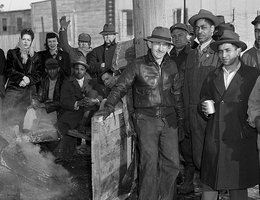
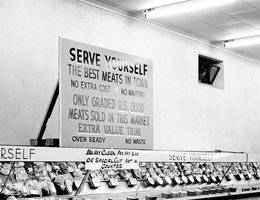
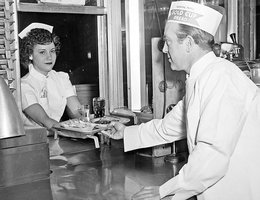
After World War II, South Omaha’s stockyards and packing houses were caught up in a postwar hunger for beef. In 1949, the average American consumed 144 pounds of meat per year, and in 1950, that number jumped to 160 pounds per year. That was nearly half a pound each day for every man, woman, and child. This was the beginning of the baby boom. There were a lot of families having babies out there!
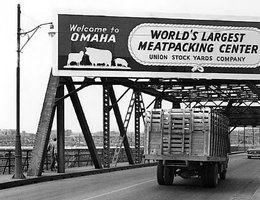
In 1956, Omaha beat out Chicago as the largest meat-producing city in the world. That year, too, for the first time, Nebraska used “Beef State" on its automobile license plates. It was also the year that the Interstate Highway System was born. More and more, cattle were brought to the yards by truck, gradually ending the industry’s dependence on rail transportation.
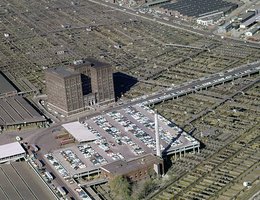
Prior to World War II, management forces in Omaha had successfully confined efforts to organize labor. After the War, things were quite different. In 1948, workers in Omaha joined in a national strike against the Big Four, and for the next twenty years, management and labor struggled with each other. But while they struggled, Nebraskans, and others, continued to eat beef at an ever-increasing rate.
